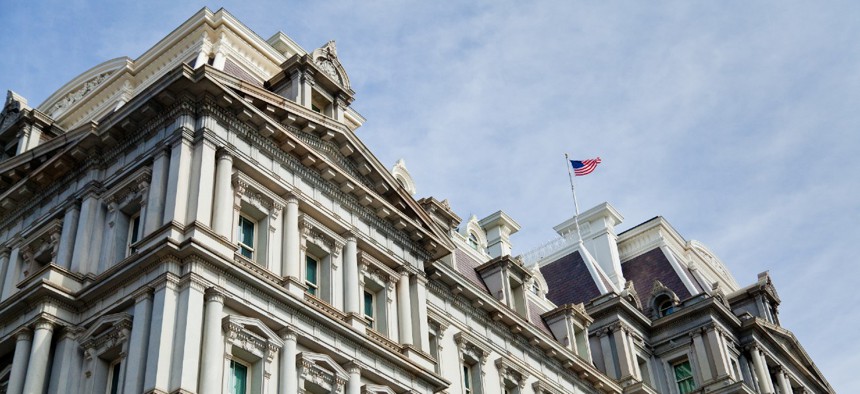
The Office of Management and Budget, housed within the Eisenhower Executive Office Building, had the biggest drop in job satisfaction on the survey compared to the previous year. lathuric / iStock.com
The Agencies that Saw the Biggest Gains in Employee Satisfaction in 2020, and the Few that Saw Losses
Only six agencies with at least 100 employees saw decreases in their job satisfaction score on the annual Federal Employee Viewpoint Survey.
In a year where the federal government posted the strongest improvement on employee engagement and job satisfaction in more than a decade on the annual Federal Employee Viewpoint Survey, it is perhaps no surprise that the vast majority of organizations saw rising scores.
Across all agencies with at least 100 employees, only six regressed on the global satisfaction index, a matrix of questions aimed at measuring employees’ job satisfaction. Although officials at the Office of Personnel Management, which administers the survey each year, warned against making sweeping conclusions based on 2020’s data due to changes in the survey content and the time of year it went out, they also suggested that the pandemic—and the widespread shift toward telework—played a factor in how employees viewed their work.
The Office of Management and Budget saw the worst regression in job satisfaction on the survey, released Monday, falling from 75 out of 100 in 2019 to 59 last fall. During the survey period, former President Trump signed an executive order aiming to strip the civil service protections of career federal employees serving in “policy-making” positions, which culminated in then-OMB Director Russell Vought slating 88% of his workforce to move to the now defunct Schedule F job classification.
The National Endowment for the Humanities saw the second steepest decline, falling 8 points from 72 in 2019 to 64 last year. And the U.S. Agency for Global Media, where employees' journalistic independence was under assault by the agency's political leadership at the time of the survey, saw its job satisfaction score fall 2 points, from 59 to 57.
The International Boundary and Water Commission’s global satisfaction score also dropped to 59 last year, 2 points down from 61 in 2019. And the National Indian Gaming Commission and the U.S. International Finance Corporation both fell by one point from their 2019 satisfaction tallies.
Among agencies with at least 75,000 employees, the Treasury Department saw the biggest boon, gaining 7 points from 64 in 2019 to 71 last year. The Homeland Security Department, frequently among the chronically lowest performers among larger agencies, also gained 5 points, from 56 in 2019 to 61 last year.
Typically, smaller agencies see bigger swings on a year-to-year basis, as the changing opinions of fewer employees are needed to significantly alter the average score. The 10 agencies with at least 100 employees that saw the biggest improvements in satisfaction compared with 2019 are:
1. Export-Import Bank: 20 point increase
2. Selective Service System: 19 point increase
3. American Battle Monuments Commission: 14 point increase
4. National Archives and Records Administration: 12 point increase
5. Education Department: 11 point increase
6. Federal Election Commission: 11 point increase
7. Corporation for National and Community Service: 11 point increase
8. Federal Communication Commission: 9 point increase
9. Consumer Product Safety Commission: 9 point increase
10 (tie). Federal Housing Finance Agency: 8 point increase
10 (tie). Federal Maritime Commission: 8 point increase
10 (tie). Surface Transportation Board: 8 point increase







